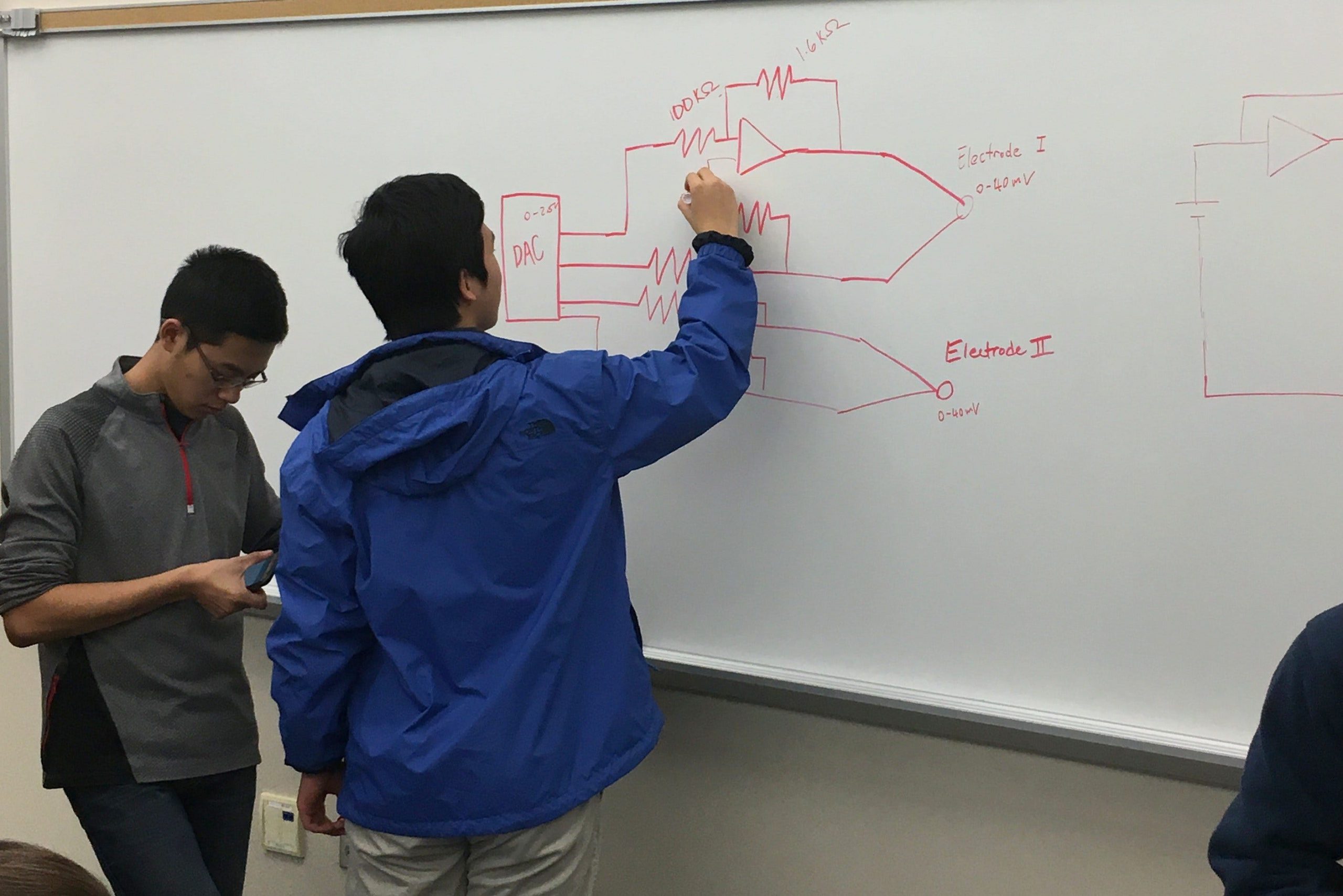High School Team Invents Medical Device, Wins Grant
 Carmel InvenTeam students sketch plans for their device
Carmel InvenTeam students sketch plans for their device
Subscriber Benefit
As a subscriber you can listen to articles at work, in the car, or while you work out. Subscribe NowA team of Indiana high school students is among only 15 throughout the country to earn thousands of dollars to bring their invention to life. The Lemelson-MIT Program awarded the Carmel High School InvenTeam $10,000 to develop a medical device that could stop severe seizures associated with a form of epilepsy. Now preparing to present the prototype to MIT engineers and inventors, the team is only the second from Indiana to earn the national recognition.
The idea for the device is inspired by a team member’s friend who has status epilepticus, a dangerous condition in which epileptic seizures last for an extended amount of time or follow one another without recovery between them. The seizures, defined as those lasting longer than five minutes, can cause brain damage or death.
Carmel InvenTeam member Cameron Poulsen helped spark the idea for the wearable automatic injection device when she told her fellow students about her young friend who has the condition, named Hayleen. While training and competing with her in gymnastics, Poulsen saw first-hand how Hayleen had to take constant precautions to avoid seizures.
“At competitions, they dim the lights and flash them,” says Poulsen. “When her team competes, they have to turn on all the lights in the competition room; otherwise, she’d struggle with flashing lights or flash photography.”
Hayleen is also never without a parent or family member nearby carrying life-saving medication that needs to be injected to stop a seizure. However, the team’s device aims to lift that angst for families; it would detect a seizure and automatically inject anti-convulsive drugs.
The device is comprised of two parts. The first is an inconspicuous sleeve the person would wear on their arm that collects two measurements. Sensors on the sleeve would detect changes in the person’s electromyography (EMG), which involves skeletal muscle activity, and electrodermal activity (EDA), which concerns the electrical characteristics of the skin.
“The EMG and EDA sensors, basically, pick up the muscle movements and the sweat gland conductance of the person,” says Carmel High School InvenTeam President Sepehr Asgari. “The sensors detect specific patterns that indicate the person is having a seizure.”
That detection sends a signal to an automatic injection device the person would wear near their hip; Asgari says the device would be loaded with anti-convulsive drugs specific to the individual patient.
“No other device [on the market] has an automatic treatment system,” says Asgari. “They only automatically contact medical services, and it takes about nine minutes for an ambulance to arrive, so there’s an obvious problem there. We’re trying to provide immediate treatment, which will give the patient a better chance of survival.”
The team wrote an in-depth grant proposal and is one of only 15 high school teams in the country to receive $10,000 to fund development of a prototype.
“It’s exciting, but it’s a bit scary,” says Asgari. “Until now, it’s only been words on paper. Now, we have to fulfill the promise and build a prototype that works, and that’s even more pressure than before.”
To tackle the development of the device, the students have divided into three teams: one to focus on the sensors, a second to work on the injector and a third to develop a system to test the device, since human testing isn’t possible.
Carmel High School Science Teacher and InvenTeam Advisor Jacob Fitzgerald says the team was a bit of an underdog in the competition to win a grant. Most of their competitors were juniors and seniors, but Carmel’s team is mostly freshmen and sophomores.
“The best part for me is seeing, at a young age, how capable they already are of figuring out ways to solve a problem,” says Fitzgerald. “We don’t know what’s going to happen [during the device’s development], and that’s a huge part of the experience; working through stuff that doesn’t work and being creative about ways to overcome that.”
As one of the teams awarded a grant, the students will showcase their prototype at Lemelson-MIT’s EurekaFest in June 2017 in Cambridge, Massachusetts. The team is also looking into competitions that could connect it with potential investors—opening the door to helping Hayleen and others who face the daily threat of dangerous seizures.
Poulsen says it’s rewarding to work on a project that could impact her friend and other patients with status epilepticus.
Asgari says the team is now focused on making the idea come to life.
Fitzgerald says the team was a bit of an underdog in the competition to win a grant.
